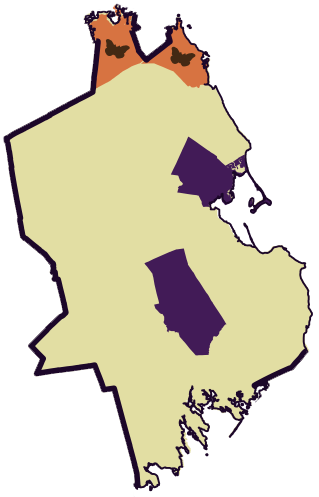MNLA members grow, sell, install, maintain and preserve the living landscape. They’re skilled professionals knowledgeable about the living landscape in Massachusetts who can help answer your questions and provide the products and services you’re looking for.
A Massachusetts Certified Horticulturist (MCH) is the ultimate resource for growing in Massachusetts. They’ve invested the time to learn and qualify as experts in the field and include nursery professionals, landscape contractors, fine gardeners, designers, land managers, tree care professionals, and turf pros.

Plant Something MA is a project of MNLA which includes professional environmental horticulturists—people who grow, care for, design and install plantings and landscapes in your community.

Growing Wild helps reverse the loss of biological diversity, foster and protect endangered species and add to the natural beauty of our Commonwealth—right in your own backyard.

MNLA provides access to green industry speakers on the cutting-edge and up-to-date information. Our dynamic community is made up of folks from all walks of life. Colleagues share advice and insights. Passion for the betterment of our community drives member participation in MNLA. Individual contribution is valued. Get involved! Join a committee or volunteer at an event. Make our industry—and your business—better!

Copyright © 2025 Massachusetts Nursery and Landscape Association. All rights reserved. Privacy Policy

Edgartown (1)

Brimfield (1)
Chicopee (4)
Hampden (6)
Holland (1)
Holyoke (11)
Ludlow (3)
Monson (4)
Southwick (1)
Springfield (5)
West Springfield (1)
Westfield (1)
Wilbraham (2)
Nursery Partners

Auburn (1)
Berlin (1)
Bolton (1)
Boylston (1)
Brookfield (1)
Charlton (1)
Dudley (1)
East Brookfield (1)
Fitchburg (2)
Gardner (2)
Grafton (3)
Groton (2)
Harvard (1)
Holden (7)
Hopedale (1)
Jefferson (2)
Leicester (1)
Leominster (4)
Lunenburg (3)
Milford (6)
Millbury (1)
Millville (1)
North Grafton (1)
Northborough (4)
Northbridge (2)
Oakham (1)
Paxton (4)
Petersham (1)
Princeton (1)
Rutland (6)
Shrewsbury (3)
South Grafton (1)
Southborough (1)
Southbridge (1)
Spencer (4)
Sterling (1)
Sturbridge (2)
Sutton (1)
Warren (1)
West Boylston (2)
West Brookfield (1)
Westborough (4)
Winchendon (1)
Worcester (12)
Upton (1)
Uxbridge (1)
Nursery Partners
Gulbankian Farm — Southborough
Perreault Nurseries — North Grafton

Allston (1)
Boston (7)
Brighton (1)
Hyde Park (1)
Revere (2)
Roslindale (1)
West Roxbury (2)
Winthrop (2)

Abington (1)
Brockton (1)
Carver (1)
Duxbury (1)
Hingham (5)
Hull (6)
Kingston (1)
Lakeville (1)
Marshfield Heights (1)
Marshfield (4)
Middleborough (1)
Norwell (1)
Plymouth (4)
Plympton (1)
Scituate (13)
Nursery Partners
Kennedy Country Gardens — Scituate

Bellingham (2)
Braintree (1)
Brookline (2)
Cohasset (1)
Dedham (6)
East Weymouth (1)
Franklin (2)
Holbrook (2)
Medfield (2)
Medway (1)
Milton (1)
Needham (5)
Needham Heights (1)
Norfolk (3)
North Weymouth (1)
Norwood (1)
Quincy (2)
Randolph (1)
South Weymouth (1)
Stoughton (2)
Walpole (2)
Westwood (5)
Weymouth (5)

Acton (4)
Arlington (9)
Arlington Heights (6)
Ashland (4)
Ayer (2)
Bedford (2)
Billerica (2)
Boxborough (1)
Cambridge (5)
Chelmsford (17)
Concord (4)
Dracut (5)
Everett (1)
Framingham (7)
Groton (2)
Holliston (2)
Hopkinton (3)
Hudson (1)
Lexington (2)
Lincoln (5)
Littleton (3)
Lowell (5)
Malden (1)
Marlborough (7)
Maynard (2)
Medford (3)
Melrose (5)
Newton (1)
Newtonville (1)
North Chelmsford (1)
North Reading (1)
Pepperell (1)
Reading (1)
Shirley (1)
Somerville (1)
Stoneham (1)
Stow (1)
Sudbury (2)
Tewksbury (3)
Townsend (1)
Tyngsboro (1)
Wakefield (3)
Waltham (2)
Watertown (1)
Westford (6)
Weston (1)
Wilmington (1)
Woburn (3)
Nursery Partners

Amherst (2)
Belchertown (5)
Easthampton (6)
Haydenville (1)
Northampton (3)
South Hadley (4)
Ware (1)
Nursery Partners
Dave’s Natural Garden — Granby

Buckland (1)
Erving (1)
Greenfield (1)
Leverett (1)
Leyden (1)
Montague (1)
Northfield (1)

Amesbury (1)
Andover (2)
Beverly (4)
Boxford (1)
Byfield (1)
Danvers (2)
Essex (1)
Gloucester (9)
Groveland (1)
Haverhill (7)
Ipswich (5)
Lawrence (1)
Lynn (2)
Manchester (1)
Marblehead (1)
Methuen (1)
Merrimac (1)
Newburyport (1)
North Andover (3)
Peabody (3)
Rockport (5)
Rowley (1)
Salem (3)
Salisbury (1)
Topsfield (1)
West Newbury (1)
Nursery Partners
Rogers Spring Hill Garden & Farm Center — Haverhill

Attleboro (1)
Dighton (1)
Easton (1)
Fairhaven (2)
New Bedford (2)
North Attleboro (1)
Rehoboth (1)
Swansea (1)
Taunton (2)

Barnstable (6)
Brewster (1)
Buzzards Bay (3)
Cataumet (1)
Centerville (1)
Cotuit (1)
Dennis (1)
Dennis Port (1)
East Falmouth (7)
Falmouth (9)
Harwich Port (1)
Harwich (1)
Mashpee (1)
Orleans (3)
Osterville (1)
Sandwich (1)
South Chatham (1)
South Yarmouth (1)
Yarmouth Port (1)
Nursery Partners
Hart Farm Nursery — Dennis Port
Soares Flower Garden Nursery — East Falmouth

Adams (1)
Beckett (1)
Cheshire (1)
Lee (1)
Mill River (1)
Monterey (1)
North Adams (1)
Pittsfield (3)
Sheffield (1)
South Egremont (1)
Nursery Partners
Ward’s Nursery & Garden Center — Great Barrington
